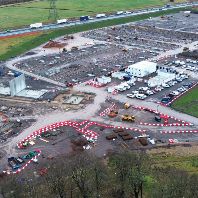Despite the largest reforms to the primary care trust since its inception, and the significant readjustments expected in the ailing care homes sector, healthcare investments still returned 7.2% in 2011 according to the IPD UK Annual Healthcare Property Index.
The NHS and its subsidiaries remain highly reliant on private investment for new building initiatives and the management of care homes. However, healthcare returns have now trailed those of the commercial property sector for the second consecutive year, as uncertainty around the sector has led to caution amongst valuers.
Despite being an 'essential service', government cuts and reforms, and issues around the sustainability of the care homes sector are creating considerable uncertainty for investors in the short term.
The secondary care sector, which largely consists of care homes, saw the largest slowdown in returns, off the back of falling values (-1.0%), a result of investor uncertainty as opposed to reduced demand. Aitchison Raffety estimate that many care home operators need a 95% occupancy rate to pay their debts, but cuts in local authority budgets, which are expected to take full effect in 2012, may drive occupancy to under 90%.
Gareth Morgan, Director in the Care Home Division at Aitchison Raffety said, "The demand is there, but local authorities will not have the funds to pay for it, especially in the coming year as budget cuts really take effect. For care homes funded by the sale and leaseback structure, rents need to remain high to service debt. However, this is not sustainable and in the next year this is going have a serious impact on the care homes market."
"Nevertheless, this is a necessary readjustment, because afterwards prices are going to be considerably discounted, and will offer excellent value which in the long term will work out better for investors and residents of these care homes."
Demographic projections for the UK mean a considerably larger proportion of the population will require care in the coming years. The Office for National Statistics (ONS) estimates that 23% of the UK's population will be over 65 by 2035, currently it is only 17%. Furthermore, by 2028 the ONS expects an 85% increase in the number of people over 85.
In the primary care sector, which predominantly consists of GP Surgeries, returns were 8.5%, still considerably higher than in the commercial sector. However, rental increases slowed to just 1.2%, largely due to the uncertainty surrounding reform of the primary care trust.
John Hearle, Chairman of Aitchison Raffety said, "GP surgeries remain an incredibly secure investment option they come with long leases and are still seeing rental growth.
"However, to continue encouraging investment the sector needs confidence, and until the government finalizes its reforms of the sector that is not going to happen. The way forward must be for the private sector to work with the Department to speed this process up."
Mark Weedon, Head of Alternative Real Estate Sectors for IPD UK and Ireland, continued, "Healthcare assets over the last five years have still been an incredibly strong investment option, returning 6.0% to commercial properties -0.7%. In 2008 the worst year of the recession, commercial assets saw a decline of -26.3% in values, in the healthcare sector this was only -10.4%."
"Essentially, despite the difficulties to be expected in 2012, healthcare assets will remain an attractive option for the diversification of portfolios, but expertise is needed before investing in the sector, and certainty regarding reforms."
Source: IPD















